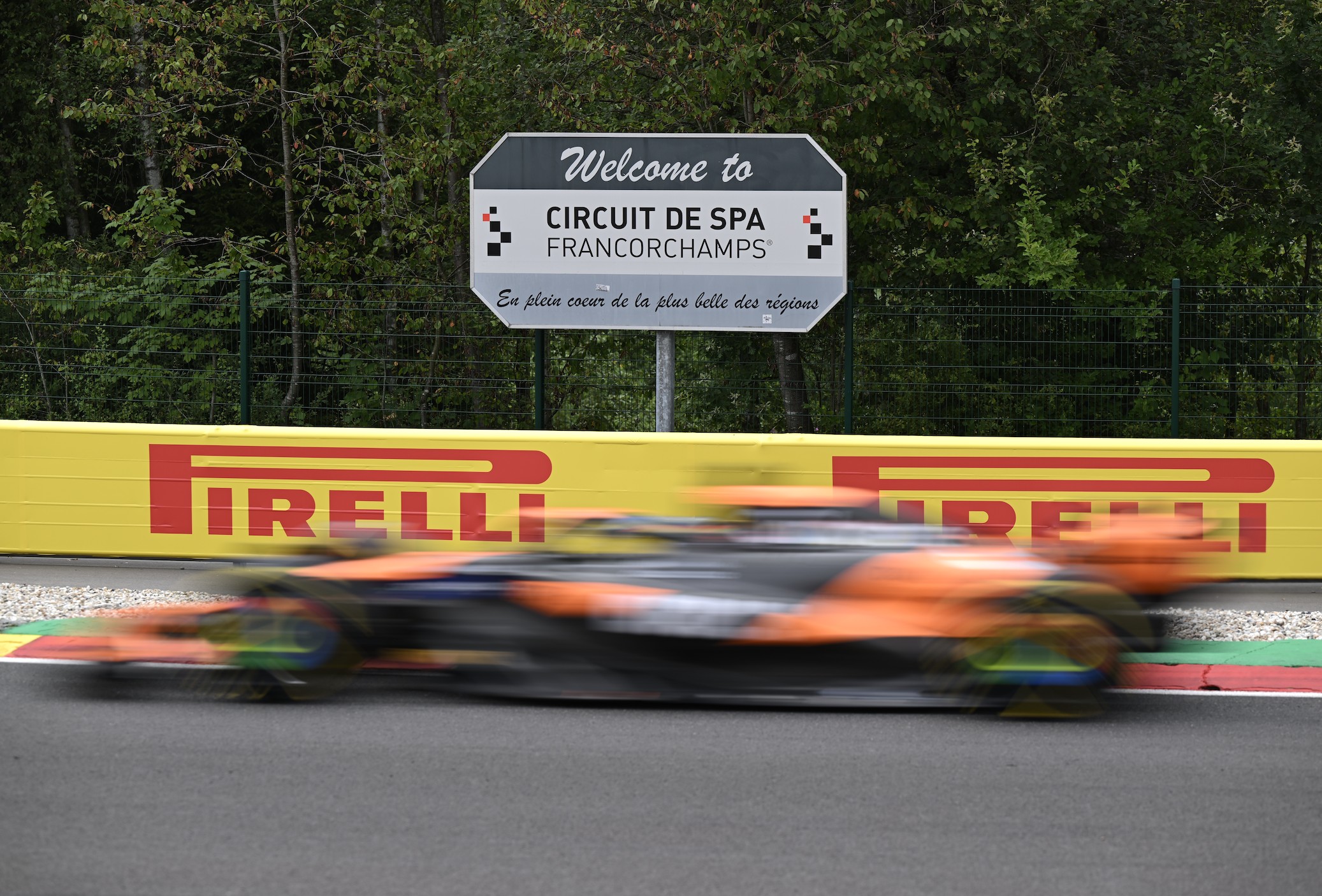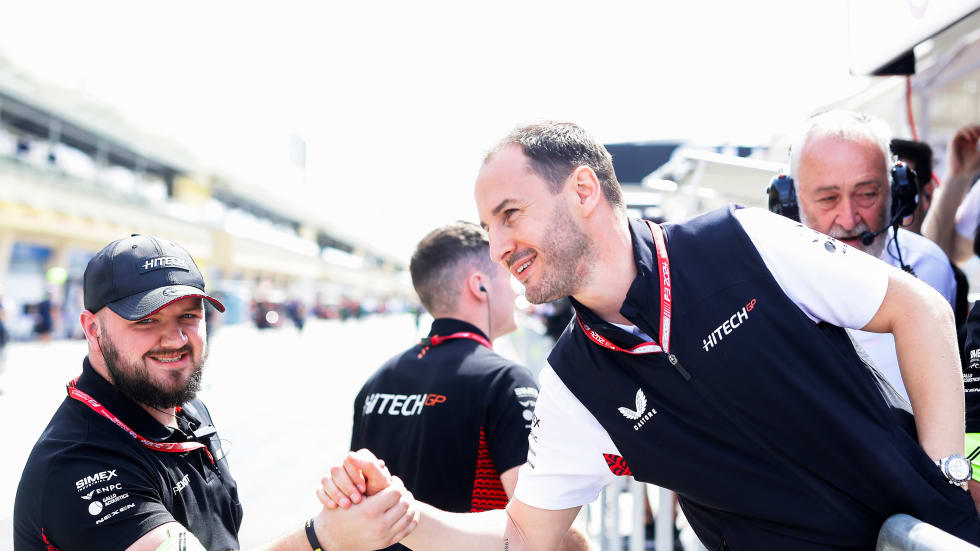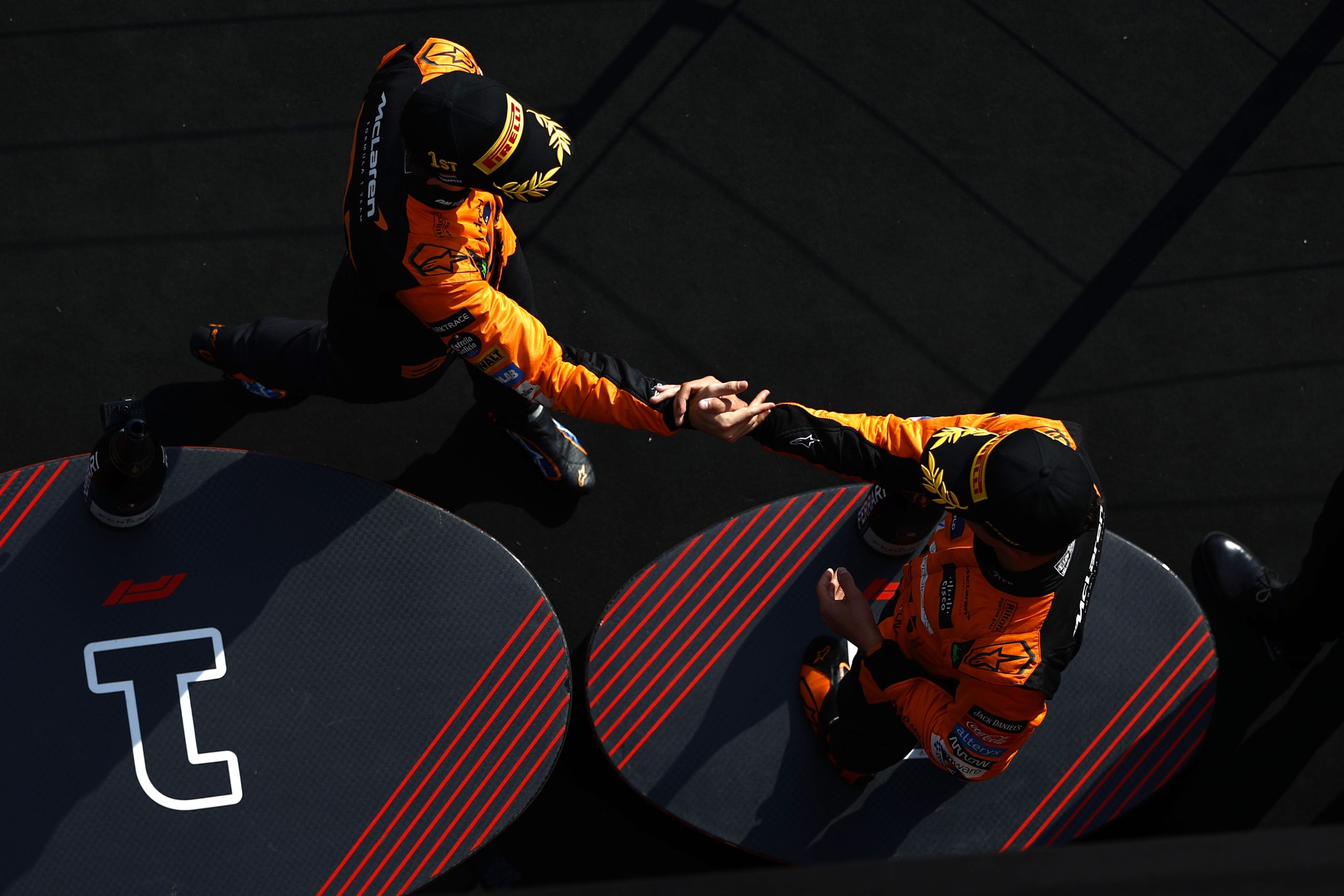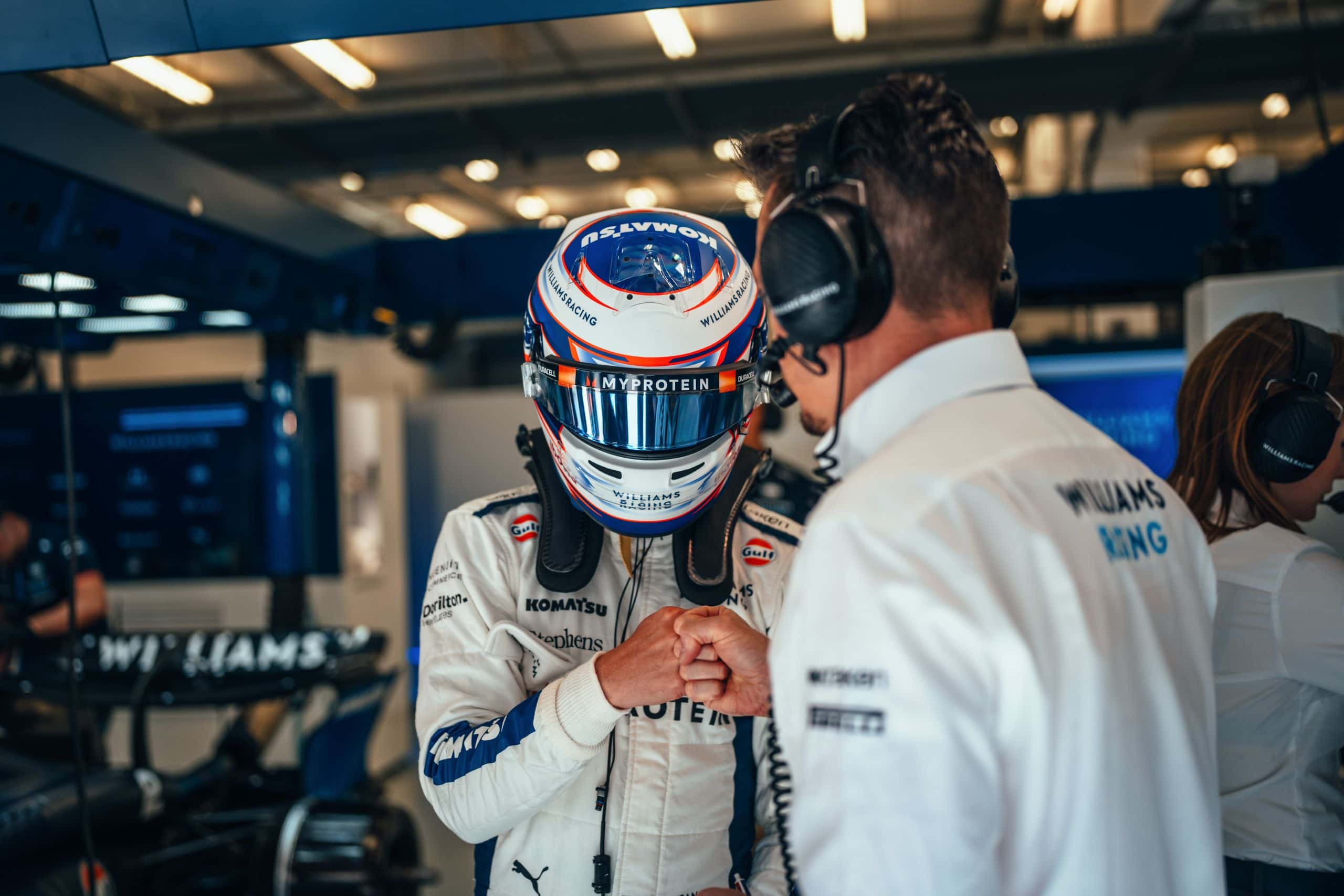How Fit Are F1 Drivers?


Formula 1 drivers are often considered elite athletes due to the immense physical demands placed on them during a race. Being at peak fitness is crucial in order to endure the challenges of an F1 race, which can involve withstanding forces above 5-G, applying significant force to the pedals, and maintaining core and muscle strength.
The dedication to their fitness allows F1 drivers to meet the high physical demands of their sport, ensuring they can maintain focus, effectively communicate with their team, and navigate intricate race tracks under intense conditions. By discussing the essential workouts employed by these top athletes, this article aims to shed light on the remarkable level of fitness necessary to excel in the world of Formula 1 racing.
Key Takeaways
- F1 drivers must be at peak fitness to withstand the intense physical demands of racing
- Workout regimes include strength training, cardiovascular exercises, and targeted muscle work
- The ultimate goal is to maintain focus, communication, and driving precision under extreme conditions
Understanding the Athleticism of F1 Drivers
Formula 1 drivers are considered to be among the fittest athletes in the world. Their intense training regimes, strict diets, and physical challenges faced during races put them in a league of their own within the motorsport world.
To maintain a competitive edge in Formula 1, drivers must possess extraordinary cardiovascular fitness. This is crucial for their ability to efficiently deliver oxygen-rich blood throughout the body during high-intensity races. The rigors of a Formula 1 race demand drivers to maintain a top physical condition, as they are exposed to G-forces up to 6.5G while cornering at speeds of up to 180 miles per hour. Consequently, having a strong neck and well-developed muscles is essential.
The workout regime for an F1 driver primarily focuses on building strength, endurance, and flexibility. This includes a combination of strength training, cardio exercises, and fitness activities such as swimming, cycling, and running. Practical exercises like simulators also play a significant role in their training, allowing drivers to hone their skills in a controlled environment.
One area that particularly demands attention in an F1 driver’s workout is the development of neck muscles. Strengthening these muscles is critical due to the substantial G-forces experienced during races that challenge a driver’s ability to hold their head upright. This focus translates into specific neck exercises aimed to provide support under these extreme conditions.
In addition to physical fitness, mental endurance is also a critical aspect of an F1 driver’s athleticism. The complex and fast-paced nature of Formula 1 races demands a high level of focus, split-second decision-making, and concentration, which drivers must maintain throughout the race.
In conclusion, the athleticism of F1 drivers is the product of intense training, commitment, and a host of factors that contribute to their status as elite athletes within the world of motorsports. The unique physical and mental demands associated with Formula 1 racing set these drivers apart, showcasing both their talent and dedication to the sport.
Essential Fitness Levels for F1 Racing
Cardiovascular Fitness
Cardiovascular fitness is crucial for F1 drivers, as they need to have a strong heart and lungs to supply oxygen to their muscles during the high-intensity races. The drivers usually engage in regular cardio workouts such as swimming, cycling, and running both outdoors and indoors, depending on the season.
During the European winter months, we often see F1 drivers running on treadmills, using compact models for home, so they can stay in peak shape all year round. F1 has an incredibly short off-season, so drivers need to maintain their fitness even when it is impossible to train outside.
These exercises help them build stamina and maintain focus, especially when racing at speeds that can quickly cause fatigue.
Core Strength
A strong core is essential for F1 drivers to withstand the immense g-forces experienced during races, as they face up to 5 times the force of gravity while maneuvering through corners. Core strength exercises, like planks, leg raises, and Russian twists, are commonly incorporated into their training routines. This helps them maintain stability and control while driving, preventing injury and optimizing performance.
Muscle Strength and Endurance
F1 drivers need muscle strength and endurance for overall physical fitness and to apply force on the controls during races. A typical strength training program for F1 drivers includes compound exercises, such as squats, deadlifts, and bench presses, focusing on functional movements and muscle balance. Resistance training is also important to build muscle endurance and improve coordination, allowing them to maintain peak performance for the entire duration of a race.
Neck Strength
One of the most critical aspects of an F1 driver’s fitness is neck strength. Drivers need to develop their neck muscles to withstand lateral g-forces encountered at high speeds during races. Head-supported neck exercises, such as neck flexion, extension, and lateral flexion, are vital components of their workout routines. Strengthening the neck muscles is essential for maintaining proper head position and ensuring drivers can focus and react quickly while enduring intense forces.
Weight Control
Maintaining an optimal body weight is crucial for F1 drivers, given the strict regulations on car weights and the significant impact that weight has on performance. Consequently, drivers follow strict diet plans and exercise routines to stay lean and minimize weight. Some weight control methods include monitoring calorie intake, portion control, and maintaining balanced diets consisting of proteins, carbohydrates, and healthy fats. Additionally, drivers often engage in high-intensity interval training (HIIT) workouts to improve their efficiency in burning calories and boosting metabolism.
Training Regimes of F1 Drivers
Workouts and Exercises
Formula 1 drivers undergo intense training programs to maintain peak physical fitness and perform optimally during races. Strength training is essential for building muscles necessary to control an 1,800-pound (800 kg) car going 200+ mph. In addition, F1 drivers work on their core and muscle strength to withstand forces up to 5-G and apply 80kg (176lb) of force to the pedals, all while maintaining focus and communication with their team.
Specific workouts often include:
- Cardiovascular training: incorporating activities such as running, cycling, or swimming to improve overall endurance and heart health.
- Strength training: focusing on key muscle groups, such as the neck, shoulders, and arms, which are particularly important for controlling the F1 car.
- Core exercises: targeting the abdominal and lower back muscles to ensure stability and balance during high-speed turns and maneuvers.
- Flexibility and mobility: incorporating stretching and yoga sessions to enhance range of motion and reduce the risk of injury.
Diet and Nutrition
A proper diet, focused on fueling the body and optimizing performance, is crucial for F1 drivers. Their diets typically consist of a balance of carbohydrates, proteins, and healthy fats, while staying well-hydrated throughout the day.
Key components of an F1 driver’s diet include:
- Carbohydrates: sourced from whole grains, fruits, and vegetables to provide sustained energy during prolonged periods of high mental and physical exertion.
- Protein: essential for muscle recovery and growth, obtained from lean meats, fish, legumes, and dairy products.
- Healthy fats: such as those found in avocados, nuts, and olive oil, which contribute to maintaining overall body function and support long-lasting energy.
- Hydration: optimal water intake is crucial for maintaining focus, preventing cramping, and assisting in muscle recovery.
Recovery and Sleep
Adequate recovery and sleep are vital components of F1 drivers’ training regimes. Drivers often have personalized recovery plans, which can include activities such as light stretching, foam rolling, and targeted massage to relieve muscle tension and promote blood flow.
Sleep is also essential for the drivers, as it is the primary time when the body repairs and rebuilds muscles, as well as consolidates memories and knowledge. Most F1 drivers aim for 8-10 hours of sleep per night to ensure their bodies and minds are well-rested and prepared for the high demands of their profession.
Physical Demands of An F1 Race
G-forces and Impact
Formula 1 drivers experience punishing forces during races due to high speeds and sudden changes in direction. These G-forces, which can exceed 5 times the force of gravity, put immense stress on their muscular system, particularly on the neck muscles, which have to support their heads during accelerations, decelerations, and cornering forces. Consequently, drivers require intense conditioning to withstand these demanding forces throughout the race.
Additionally, impact forces in cases of accidents are another concern for F1 drivers. They need to be physically prepared for potential crashes, by training their core muscles to protect their spine and internal organs from injury.
Heat and Humidity
The extreme conditions in the cockpit, with temperatures reaching up to 50 degrees Celsius (122°F), combined with the physical exertion, expose F1 drivers to severe heat and humidity. To counteract these challenges, drivers undertake specific heat chamber training sessions designed to prepare their bodies for races in hot climates. Proper hydration and endurance conditioning are essential to maintain performance levels and avoid fatigue under these difficult conditions.
Precision and Reflexes
Hand-eye coordination and quick reflexes play a crucial role in an F1 driver’s performance, as they need to make split-second decisions while hurtling around the track at high speeds. Precision is also vital when making adjustments to the car’s controls and communicating with the team.
F1 drivers participate in targeted workouts and training programs focusing on enhancing their reflexes and coordination, as well as their core and muscle strength. These aspects combined ensure that they are physically prepared to meet the requirements of the sport, from the beginning of the race to the end of the intense qualifying lap.
Case Studies: Training Regimes of Top F1 Drivers
Lewis Hamilton
Lewis Hamilton, a seven-time Formula 1 World Champion, maintains a rigorous training regimen to keep himself in peak condition. A combination of cardio, strength, and mobility training helps him cope with the extreme physical demands of F1 racing.
His former personal trainer, Angela Cullen, played an essential role in tailoring his training programs for many years.
Cardio sessions often include intense cycling, treadmill running, and swimming to build cardiovascular endurance. It’s not uncommon for Hamilton to train twice a day, focusing on alternating muscle groups to allow for proper recovery.
For strength training, Hamilton incorporates compound exercises, such as squats, deadlifts, and bench presses, to build overall muscle strength. Additionally, he places special emphasis on neck muscles due to the substantial G-forces F1 drivers are exposed to during races.
Finally, a critical aspect of Hamilton’s training routine is mobility and flexibility for injury prevention. This includes dynamic warm-ups, stretching, and incorporating functional movements like yoga or Pilates to maintain a balance between strength and flexibility.
Daniel Ricciardo
Daniel Ricciardo, a successful F1 driver, also adheres to a strict fitness routine that keeps him race-ready. His training program, similar to Hamilton’s, involves a mix of cardio, strength training, and mobility exercises to endure the demanding physical nature of the sport.
Cardio workouts for Ricciardo typically include road cycling, high-intensity interval training (HIIT), and occasionally cross-country skiing to improve endurance and cardiovascular fitness. Ricciardo is known to vary his exercises to avoid falling into repetitive routines.
Strength training focuses on both upper and lower body exercises, complemented by targeted neck training essential for F1 drivers. It consists of compound exercises like squats and deadlifts, while also incorporating exercises specifically designed for the core and neck muscles.
In addition to strength training, Ricciardo values agility, balance, and flexibility, with functional training becoming a vital part of his fitness program. This integrates yoga, Pilates, and mobility drills to ensure his body remains adaptable and injury-resistant.
Both Lewis Hamilton and Daniel Ricciardo demonstrate the importance of a well-rounded training regime in ensuring top performance levels as F1 drivers. Their commitment to fitness and reliance on personal trainers plays a vital role in their continued success in the sport.
Long-term Health Impacts and Risks
Formula 1 drivers are required to maintain peak physical fitness to perform well in races. However, there are some long-term health impacts and risks associated with this high-level of physical activity.
One concern that has emerged in recent years is the potential risk of illness, such as infections and viruses, spreading among these athletes. The global coronavirus pandemic has prompted increased awareness of this issue. Formula 1 has implemented strict protocols to prevent the spread of the virus among drivers, team members, and race attendees.
In addition to the risk of illness, F1 drivers may face long-term injuries from accidents during their career. Romain Grosjean’s horrifying crash in 2020 is a stark reminder of the dangers inherently present in this high-speed sport. Although Grosjean survived the accident with relatively minor burns, others, like Robert Kubica, have not been as fortunate. Kubica suffered a severe arm injury during a rally race in 2011, which consequently impacted his F1 career.
Despite these risks, F1 drivers and teams are well aware of the need for long-term health preservation. They undergo rigorous training to improve their physical endurance and practice constant vigilance to avert or minimize accidents. These efforts have led to a decrease in serious incidents and fatalities in the sport over the last few decades.
In conclusion, while there are undeniable long-term health impacts and risks associated with being a professional F1 driver, steps are continually taken to enhance driver safety and reduce potential health hazards in the sport.
Frequently Asked Questions
What are the essential workouts for F1 drivers?
F1 drivers require specific workouts to maintain their fitness levels, which typically include strength and conditioning exercises, cardiovascular training, and exercises targeting neck muscles. Resistance training focusing on upper body, core, and lower body strength is crucial, as well as cardiovascular training involving activities such as cycling, running, and swimming for endurance.
How is an F1 driver’s physical fitness maintained?
F1 drivers follow strict workout regimens and dedicate significant time to their physical fitness. They often have personal trainers who help them create tailored workouts that address their specific needs and goals. Drivers also periodically monitor and assess their progress to ensure they are consistently improving and adapting as required.
What role do F1 driving simulators play in training?
F1 driving simulators play a vital role in providing drivers with a realistic and immersive practice environment. Through these simulators, drivers can hone their skills, work on reaction times, and become familiar with various circuit layouts without the physical wear and tear experienced on the actual track.
Do F1 drivers have specialized diets?
Yes, F1 drivers adhere to specific diets that are designed to optimize their performance and maintain a healthy body weight. Their diets focus on a balance of macronutrients, including carbohydrates, proteins, and fats, and are rich in vitamins and minerals. F1 drivers also ensure they remain well-hydrated throughout their training sessions and races.
How does an F1 driver’s fitness level compare to other athletes?
F1 drivers’ fitness levels are comparable to those of other elite-level athletes. While the physical demands of Formula 1 driving may differ from other sports, the required endurance, strength, and mental focus qualify F1 drivers as top-tier athletes in their own right.
Why is muscular strength important for F1 drivers?
Muscular strength is crucial for F1 drivers, as it helps them withstand the intensity and physical challenges of driving at high speeds. Strong neck muscles are particularly important, given the extreme G-forces encountered during races. Additionally, drivers need upper and lower body strength to control the vehicle effectively and perform overtaking maneuvers.





